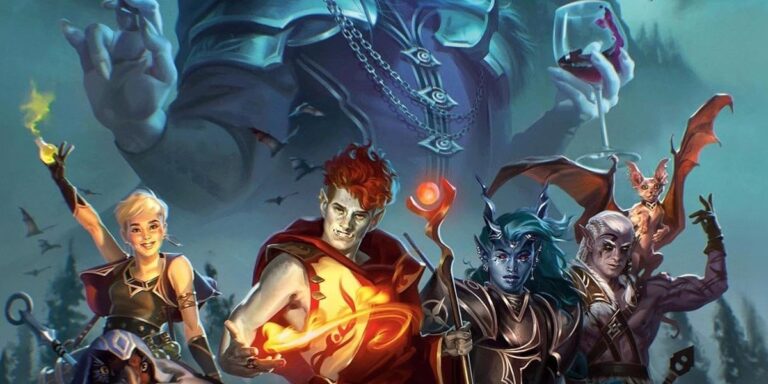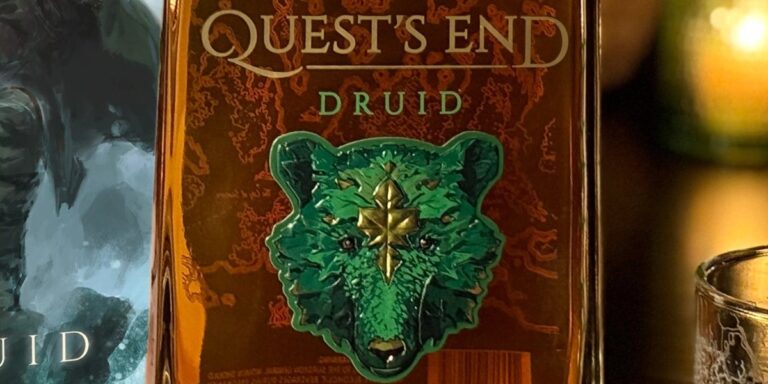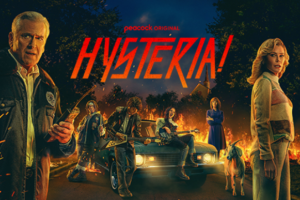Anjali Bhimani brings her skills as a Game Master to the masses. The actress takes on the role of every voice in Dreamhaven’s new TTRPG-inspired game “Sunderfolk.” Bhimani brings every character to life through her incredible performance – she also acts as the GM for the players. “Sunderfolk” is set in the underground town of Arden, which is filled with talking animal residents. The town sits on the remnants of an arcane crystal known as the Brightstone. As the heroes of Arden, players must try to protect it from threats lurking in the surrounding Sunderlands.
Bhimani brings every character to life through her incredible performance.
Bhimani shows off her breadth and depth as a performer in this engaging new RPG experience. “Sunderfolk” is a tactical RPG that offers one to four players an endlessly fun couch co-op gaming experience. You can play as one of six classic character classes, including arcanist, bard, berserker, pyromancer, ranger, or rogue. The game uses a player’s phone or tablet as the controller. This includes the cards, rules, inventory, and more after scanning the QR code on their TV or monitor.
An acclaimed performer, “Sunderfolk” allows Bhimani to show off her skills while bringing the RPG to fans. Bhimani understands the power and community that games can build, having recently spoken at the United Nations about this very topic with Games For Change. In Temple of Geek’s exclusive interview, Bhimani explains not only what drew her to “Sunderfolk” and the experience of voicing every character, but why games are important in helping bring communities together for a better, kinder world.
“I Just Wanted To Make Sure That The Voices Were As Robust And As Satisfying As The Art Itself”
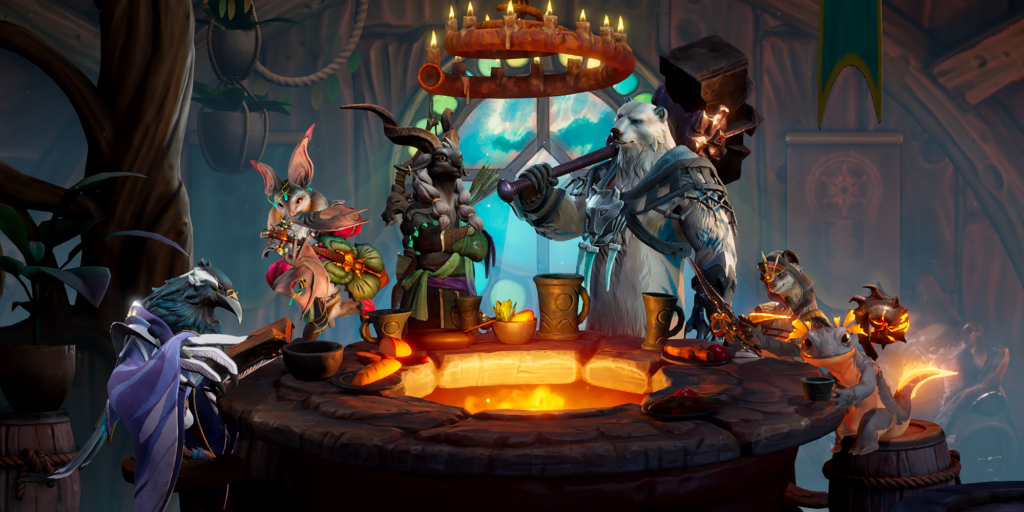
Temple of Geek: I think the thing I’m most excited about with “Sunderfolk” is that you’re not only acting as the narrator or GM, but you voice every single character in this.
Anjali Bhimani: Yeah. It’s both the thing that I was the most excited about and the thing that I was most nervous about. Because even with the amount of latitude that you are given when you are the GM of a game, and therefore everybody knows that it’s all one voice, there’s still that desire to create voices that are different enough that the characters themselves are very, very different. The art is so glorious in this game and the design of the game is so glorious. So I just wanted to make sure that the voices were as robust and as satisfying as the art itself.
Temple of Geek: Oh, I’m so excited to get into it with you. The first thing that I was curious about is what about this game and this world really drew you to this project and made you say, I want to take on this challenge?
Anjali Bhimani: Honestly, it was Chris Sigaty. When he talked to me about the whole vision for Dreamhaven, for Sunderfolk, and the idea of bridging the gap between tabletop and video games. Allowing people who are bridging the gap for people who find that all of the books and the setup and all of that are a giant barrier to entry. This is a very low lift. I was so taken by the idea of making tabletop more accessible to people who find that it’s a barrier to entry when you have to do all of the setup and all the books and all of the rules.
I mean, there’s some games where it takes a whole session just to set up the game. While a lot of tabletop games will include that in the adventure, it’s still not nearly as satisfying as just being able to jump right in. So, I love the fact that they wanted to reinvent game night and rediscover it for people who just want to have their friends over, want to get their family together, want to be able to jump into a game that has the same interactive and the same collaborative feel to it that tabletop does.
But maybe has a little more of an interactive video component and something that everybody can do because [nearly] everybody’s got one of these [holds up her touchscreen cell phones]. Hopefully their case doesn’t look like it’s been through the garbage disposal like mine does, but everybody’s got a little gadget and everybody’s got a screen somewhere in their home and you can share that tabletop experience while still having the visual experience and the interactive experience of a video game.
Anjali Bhimani Breaks Down The “Beautiful World” Of Sunderfolk
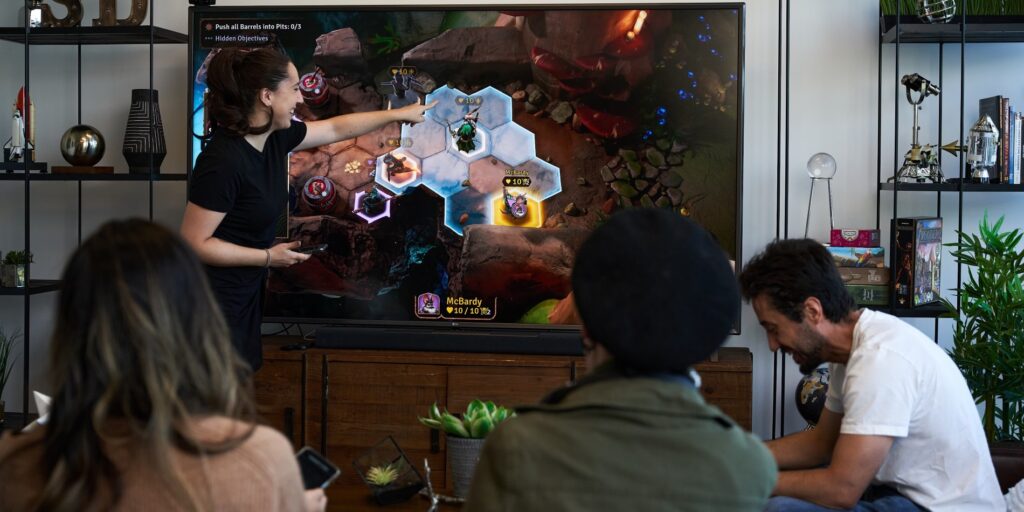
Temple of Geek: I love that you said rediscover game night. I think that’s a very, very cool, very specific wording and I like that a lot.
Anjali Bhimani: Yeah, I mean, I don’t know about you, but I grew up playing board games with my parents and my family and it was such a wonderful bonding activity. But with some of the games that we love so much as tabletop players, the setup takes so long that your family’s going to be asleep by the time you set that thing up. But with this, you can step right in, you can jump right in. It’s for all ages. It’s really a great group activity.
Temple of Geek: Can you tell me a little bit about the world of “Sunderfolk”? I am a huge animal person, so I love that it’s all these animal characters. I think that’s so fun.
Anjali Bhimani: Yeah, so it’s a beautiful world. They are set after sort of their version of a Calamity that happened above ground. The Sunderlands are this area, deep nestled underground where all kinds of animals live together here in their hometown.
But of course, just outside of their borders, darkness looms. There are threats and they are living under the light of the brightshard. The brightshard is what gives them life, is what provides sustenance. It basically is what powers their entire town. So when that is threatened is when we come into the action of Sunderfolk.
Anjali Bhimani Becomes Everyone’s GM In Sunderfolk
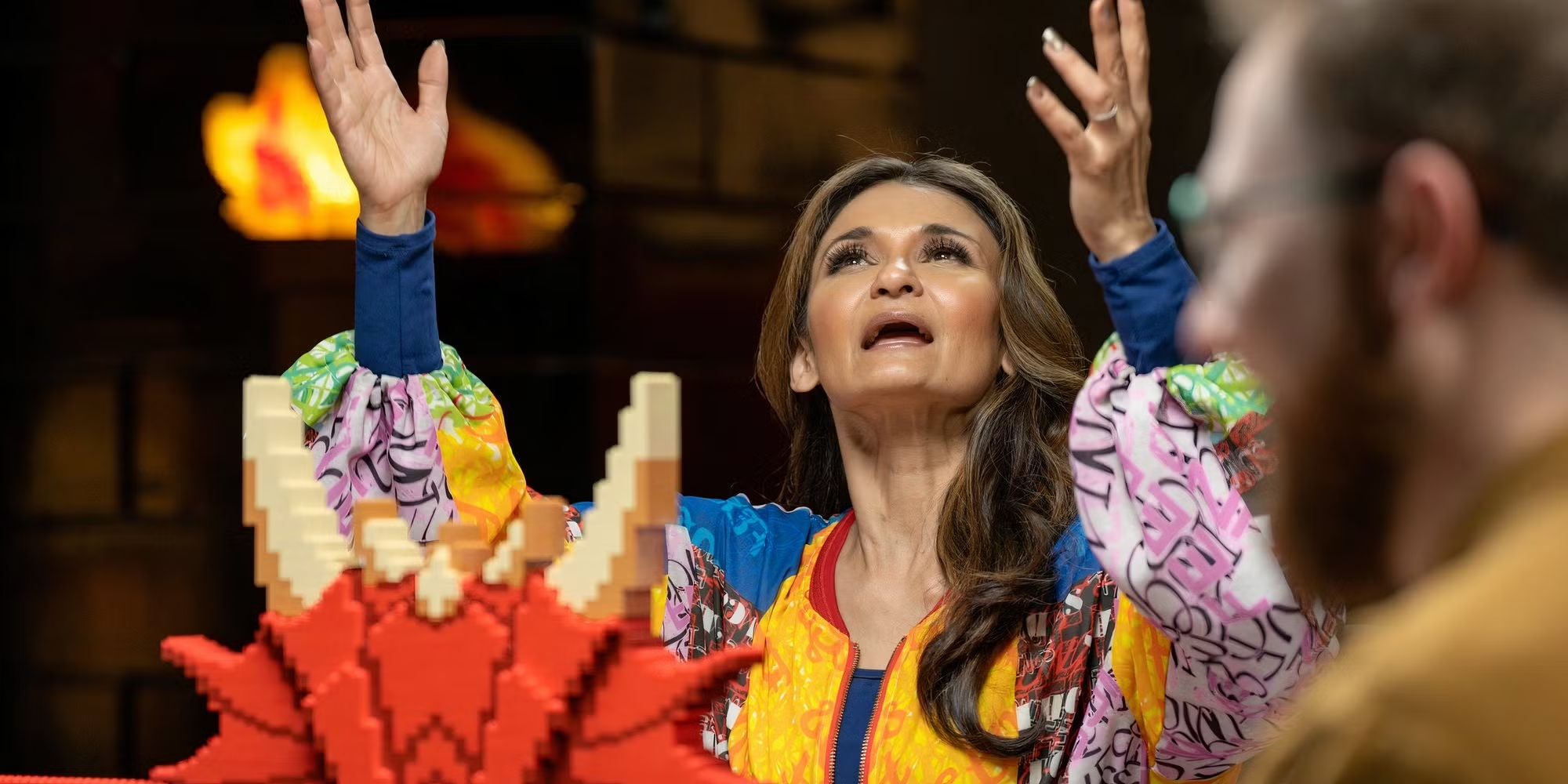
Temple of Geek: I know video games tend to take a while to produce. Had you GM’d in tabletop games before this, or was this your first time GMing?
Anjali Bhimani: My first time GMing in tabletop was that Lego one-shot earlier this year. So that was the extent that, and then The Puppy Roll are the two times that I’ve really GMed a full game. I’ve been doing a couple of things on the side to raise funds for certain charity events, but that’s pretty much it.
So while this is a GM experience for the people at home, it’s a little different for me as we’re recording it because obviously we’re recording it in parts and bits and pieces, and I am not getting the interactive aspect of it that people will get when they play. So recording all of the options like you do whenever you’re recording a video game, we’re recording all the branching dialogue, we’re recording all of the possibilities, but it’s not quite the same as GMing.
Temple of Geek: Did it kind of give you maybe insight into that style of GMing before you did it at a tabletop? Because like you said, you’re recording all these different options that people can have, so maybe it helps you get in that mindset
Anjali Bhimani: A little bit. I mean, I do think that doing voiceover for games in general sets you up for handling all of that branching dialogue. The difference between that and tabletop is that when you’re doing it in a TTRPG, you’re making up the lines as you go. And so that is a whole other level of skill that you have to present when you’re doing it.
Thankfully, we have brilliant writers on Sunderfolk. We have the people behind it. We have the whole creative team with Chris [Sigaty], and we have Erin [Marek]. We have everybody behind the scenes making sure that everything suits and everything fits the world. So I just have to come in and bring these characters to life with their voice.
Anjali Bhimani Explains The Recording Process & Finding The Right Voices
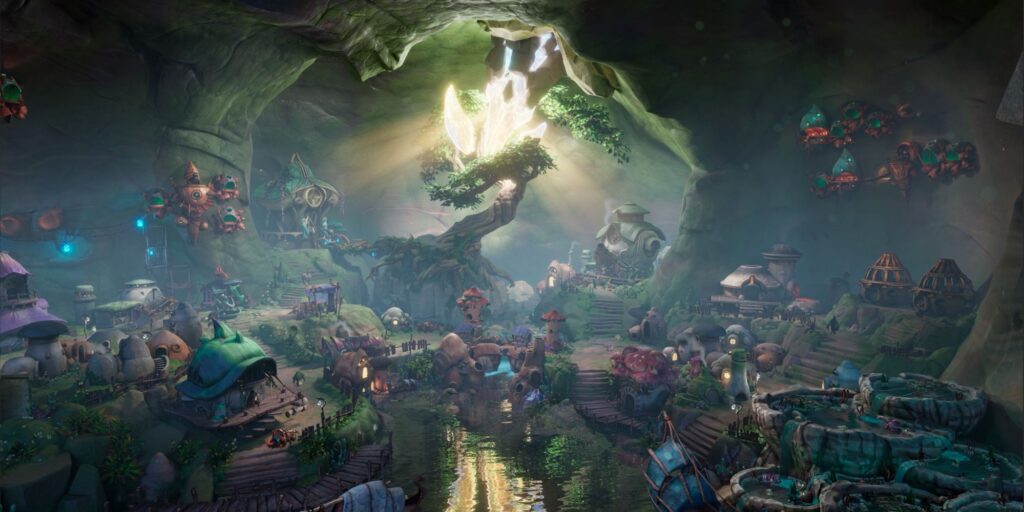
Temple of Geek: Because you voiced so many of these characters, do you know exactly how many characters you voiced and how did you approach making each voice fit each character?
Anjali Bhimani: I actually don’t remember exactly how many characters I voiced. Obviously there are some characters that show up for a small amount of time and some that are present throughout the game. But I did ask early on to be able to see all of them, at least the main and supporting, even if it wasn’t the tiny, tiny ones, to see a breakdown of what they were so that I could have it in my head.
Okay, well, this voice, I want to save for that character. This voice that’s popping into my head for this one. Oh, I see another character that might be actually more suited to it, so let me put that one aside and find a different one. Much like I do in my auditions, when you’re not given a tremendous amount of information about a character in a voiceover audition, you really do have to grab onto what little facts or what little descriptive texts that you get.
Also what they’re saying in the lines kind of informs you and how they’re saying them kind of informs you who they are. So when you have a compressed amount of dialogue and a compressed amount of description, it’s usually just hanging onto one element of that character and then trying to focus on that.
There’s one character that was actually in the audition as well, the button mushroom and is just the most adorable high energy sweet, but drives people crazy character. So in that sense they are all about their enthusiasm, even though it might be a little much for other people grabbing onto that and putting that into a voice. I knew that I wanted this particular voice to suit that character.
And I will say that after getting a chance to play it a few weeks ago when they started to release stuff for the press and influencers, I definitely had a conversation where I was like, I kind of want to redo this character. And I kind of want to maybe look back at this because now that I’m seeing the art in motion, it’s different now that you’re seeing how they move.
I kind of want to go back. If we have the time, if we have the inclination. It’s been really lovely because it’s probably the most collaborative experience that I’ve had in an interactive game so far, because a lot of times if you’re only playing one character, you can’t really say anything about the interactions.
But if I know, well, this is how I’m doing this character and this is how I’m doing this character, and they’re going to have a chance to connect, now I can have a little more input into, Hey, I feel like this might work better for this conversation now that we found the voice for this character, even though it was far after finding the voice for this one.
Or now that I see how that character moves in battle, which we wouldn’t have known during the voiceover sessions. Now that I see how that character moves in battle or in an encounter, I kind of want to change this up.
Temple of Geek: That’s amazing. It actually ties into one of my questions about the recording sessions. Was it something where you were recording each character at a time? Were you doing a scene and was there an element where they would play back your recording for a different character so you can kind of create chemistry with yourself?
Anjali Bhimani: I don’t think we did that so much. I think there might’ve been a time or two that we did that, but we definitely recorded one character at a time so that there wasn’t bleed between the two. Because that’s a challenge, that’s a hell of a challenge, and as much as I feel like I might be up to that challenge someday, I appreciate the fact that they made it easier on me so that we could have some continuity with the recordings.
Anjali Bhimani Describes The Challenges Of Differentiating So Many Characters’ Voices
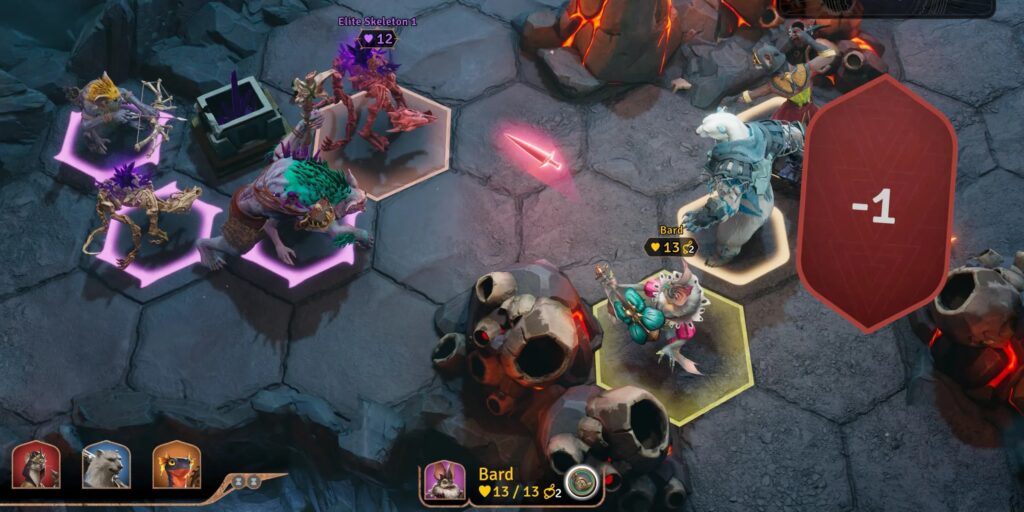
Temple of Geek: What for you was maybe the most surprising part of this process where you’re voicing all of the characters in a game?
Anjali Bhimani: This shouldn’t be a surprise, but just how much fun it is. Not because you’re like, I get to do everything, but how much fun it is to explore so many different aspects of so many characters. Really figure out, so with this little voice box. What can I actually convey?
How can I stretch what it can do to convey so many different characters in a way that delineates clearly enough for the players who they are? Yeah, I think that was the most surprising. It was certainly the most challenging thing. I will say that I think I’m going to have to go with the most challenging thing versus surprising. The most surprising thing was watching it when we played it.
Being like, oh, hey, that actually that does work. Even though it’s sort of the same thing that happens anytime you voice a character that you haven’t seen in gameplay. Where you see it and you’re like, oh, wow, that actually, now I see how that tracks. That’s just always a testament to the development team and to the creators of the game when they’re directing you. When they’re helping you find those voices.
Temple of Geek: I always am so intrigued by voice acting because it’s mind boggling to me how many voices and sound effects people can actually do.
Anjali Bhimani: And some of the people we know, some of our mutual friends, the sound, just the sound effects they can do. A large part of training to be a voice actor is just playing with your voice and figuring out what it can do. I mean, I really hate the term voice actor to be honest.
Because all of us are actors first, and we just happen to be limited to using our voice in this particular medium. But you are an actor first and foremost, and I much prefer to use the term game performers because there’s definitely a different vibe to that. But yeah, I’m always amazed at the sort of chameleon effect that so many people in this field have.
Temple of Geek: I love that, I like game performers a lot. I do think that makes more sense. I think you’re right, it is overlooked, but to me, I feel like voice acting is almost more challenging to a degree because you have to convey these emotions only using your voice versus being able to use body language and your facial reactions and all those aspects.
Anjali Bhimani: That is definitely more of a challenge. And I think, again, I think it’s important to change that paradigm for everyone, not just for me, for actors themselves, so that they don’t think that they are just limited to that, but also to the world at large.
As performances become more and more involved, especially in games where we have performance capture. Where you are essentially doing a play. You are up there doing a theatrical event, and you just happen to be being filmed in 360 as you go. That is a full body, full, complete performance, physicality and everything.
And a lot of times when we’re in the vocal booth we’re doing things as much as we can within the limits, within the confines of what we can do and still not make noise on the mic. So no one would’ve called Robin Williams a voice actor, but he was one of the most accomplished animation actors that there was out there. And so that sense of owning the acting part of it and the audience understanding the acting part of it, I think is a good paradigm for us to shift.
Anjali Bhimani Talks Games For Change & Improving The World Through Games
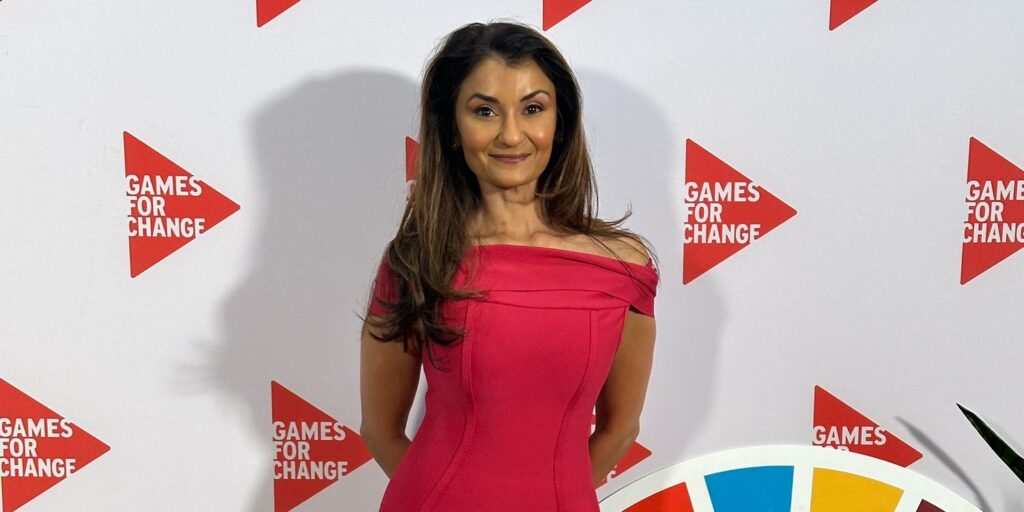
Temple of Geek: Can you talk to me about some of the exciting things you have coming up on the horizon?
Anjali Bhimani: Yeah, yeah. Well, I’m so excited because on Tuesday [October 29th] I’m going to be doing this event at the UN along with Games for Change. We’re talking about the UN’s sustainable development goals along with gaming. Basically how gaming can be used to work within these parameters to help people on a global level.
Games For Change is this wonderful organization that I’ve worked with for many years now, and they’re all about furthering the cause of games as a tool, as an instrument to be able to affect change in the world. Whether that is social change, whether that is education, whether that is helping to create empathy. Whatever it is, there are so many different things that you and I both know and many gamers know affect the world at large, but a lot of people outside of the gaming industry maybe don’t.
So we are teaming up with some folks from the UN and from some NGOs to basically talk about how games can be used in the four fields. The four sustainable development goals we’re working on are mental health, gender diversity, inclusion and equity, and world hunger and children’s rights. And talking about all of the different ways that these can be used.
So there are going to be some incredible conversations. I’m going to be co-hosting it with Susanna Pollack*, who is the President of Games for Change. And then also I will be moderating one of the conversations that we are having about tabletop role playing games, particular in one of the goals that the UN has. So, continuing to spread the cause of people understanding how important games are, how important play is, how important and effective, and life changing it can be.
I feel like over the last 10 years, I’m finally getting to verbalize and understand how to succinctly and eloquently explain to people how important it is. It’s not just entertainment. It’s not just a thing that your kids do after they’re done with their homework. It’s something that’s affecting us all. It’s expanding people’s worldviews, it’s connecting people with each other.
It’s helping people who maybe don’t deal really well with people, one-on-one to make friends, to enable them to have relationships with people. So I’m really excited. I’m really, really excited we’re going to be doing that.
Temple of Geek: That’s incredible. I love how you’re using gaming and pushing gaming forward as a way to help people. The Puppy Roll was so great. I’m so glad that was so successful.
Anjali Bhimani: Thank you. Well, it just feels like, I mean, look, again, so many of the people that we know and the companies that we know are trying to do the same thing. We all are going to be playing these games one way or the other because we love them. We love the effect they have on our lives. We love creating with our friends.
If we’re going to be doing those things, we might as well be doing them in a way that also does good for the planet, does good for people, does good for our community. Being a creator is wonderful. Being a creator is so much fun, but doing it for yourself is not the answer.
At least not for me. Then it can be a very solitary, a very self-involved, a very strange and lonely life. But if you know that you’re there to be of service, whether it’s of service to an audience that you want to take on a journey with you or of service to a greater cause that you might either be raising awareness for or fundraising for or introducing other people to, that to me, is really exciting.
It’s that same excitement you get when you invite someone to the table to play a new game, and all of a sudden they get bit by the bug. You’ve been of service to that person. So now we’re just trying to take that a step further and take that to entire communities. Take that to people who are trying to make change in their own community, who are trying to benefit their community.
And God knows we know this. The gaming community is here to help and support. It is always mind blowing to me how rabid they are for ways to support each other. How hungry the gaming community is for a chance to make a difference. And I don’t always see that in other media. You don’t necessarily see that in things where it’s not as interactive. So yeah, it just makes it more fun for me.
And since I don’t really get a chance to just hang out with my friends and play games, I love creating these events or creating these opportunities for us to do it for a greater cause. So then we also have an excuse to get together and play games.
“Sunderfolk” will release in 2025 on all major platforms, and is created by the former co-founder of Blizzard. Be sure to join our Discord community for all things geek!
*Edited 11/8/2024

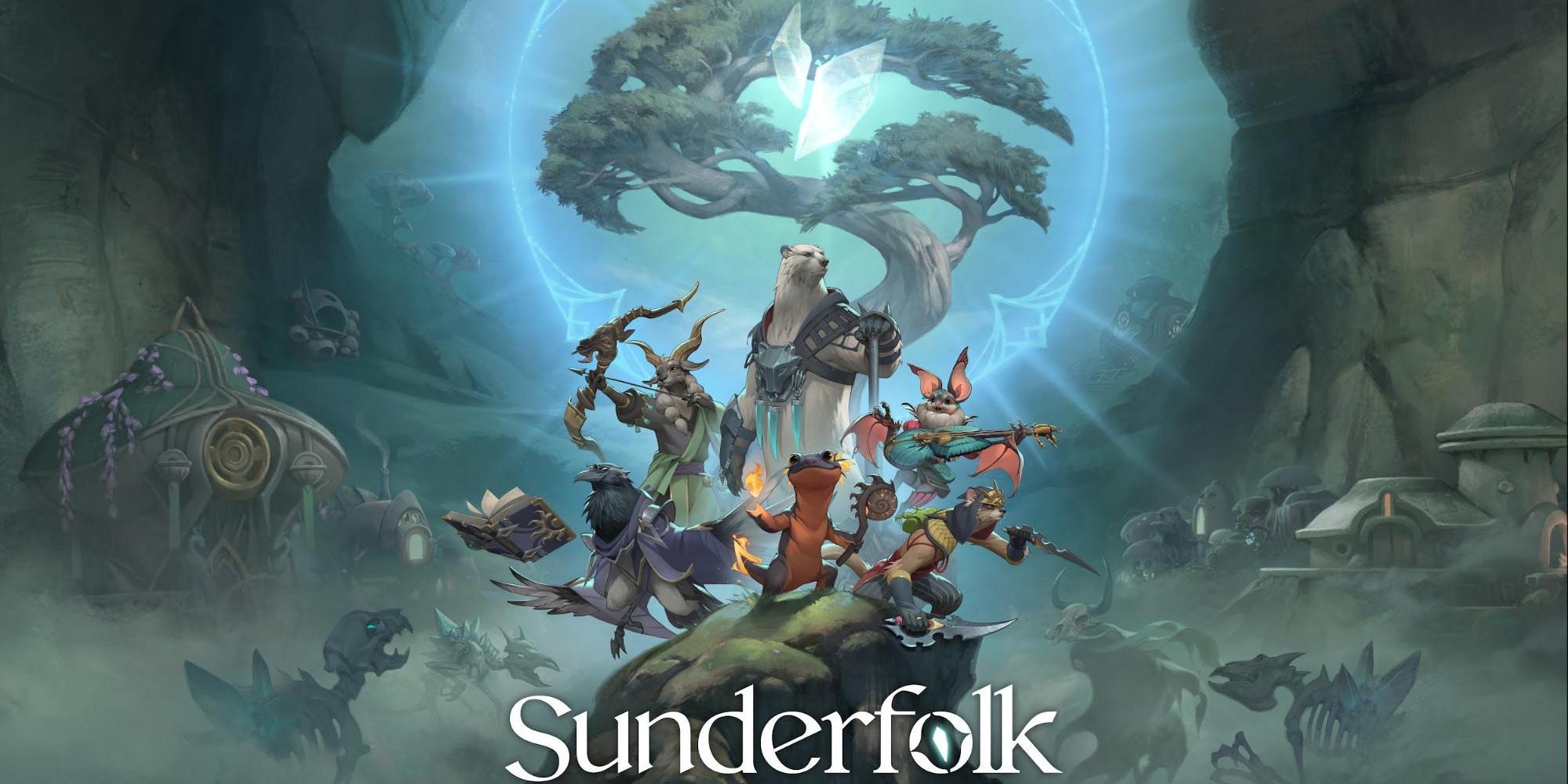
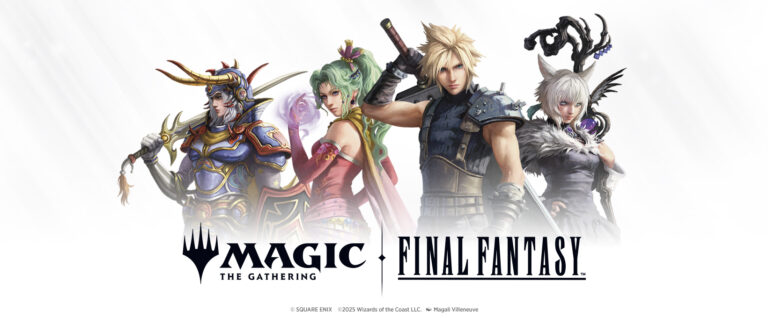
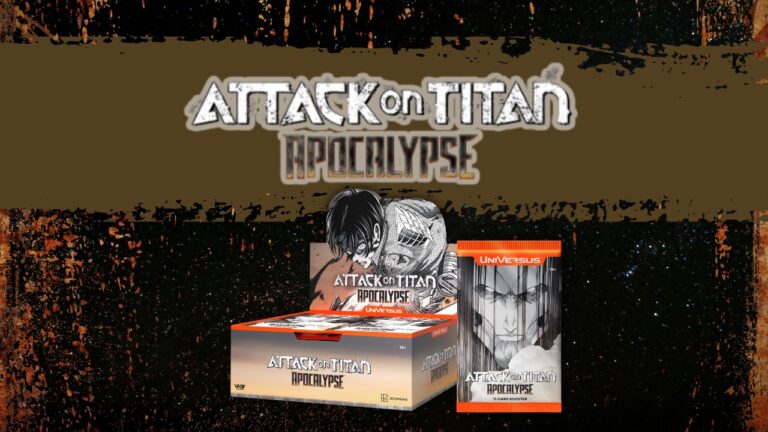
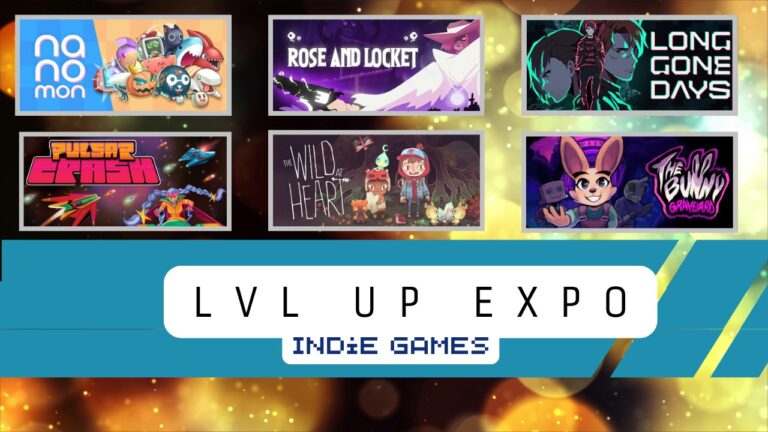
![“[Lou Wilson] Might Die!” Siobhan Thompson Teases Dimension 20 Live: Battle At The Bowl](https://templeofgeek.com/wp-content/uploads/2025/05/Dimension-20-Battle-At-The-Bowl-header-768x384.jpg)
